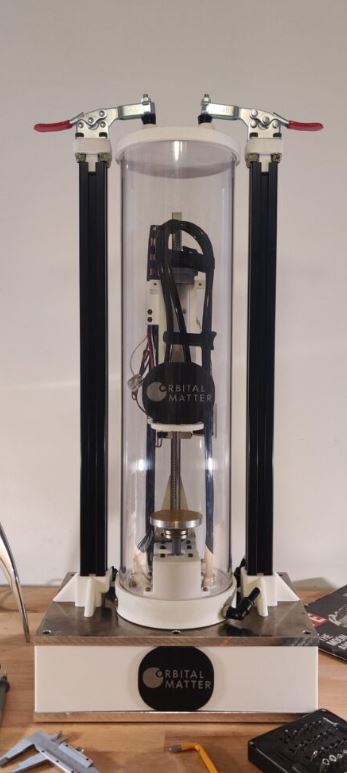The space sector and exploration have emerged as a focal point of scientific interest, and numerous advancements and breakthroughs have occurred in 3D printing technology, which is increasingly viewed as the next frontier in addressing human challenges.
Keeping the above in mind, in a recent advancement the European Space Agency is poised for a remarkable advancement with the imminent launch of the Ariane 6 rocket. Set to make its inaugural flight in July 2024, this upcoming rocket will supersede the Ariane 5, expanding its capabilities to accommodate a broader spectrum of missions.
After 27 years of service, the final mission of the Ariane 5 rocket concluded on July 5, 2023. Its successor, the Ariane 6, began development nearly a decade ago in anticipation of this transition.
“During those nine years in which we developed Ariane 6, we introduced changes with a prime contractor and the industrialist to better serve evolving needs,” explains Lucía Linares, the European Space Agency’s Head of Strategy and Institutional Launches.
An Exciting New Frontier
An intriguing highlight of this debut launch is the inclusion of the Replicator mission by Orbital Matter, a startup headquartered in Warsaw, Poland, and Berlin, Germany. This mission endeavors to showcase novel 3D printing technology in the challenging environment of space, outside the “sheltered confines” of the International Space Station (ISS).

Within the ISS, various 3D printers such as the Refabricator by Made In Space, now integrated into Redwire, have proven their efficacy in crafting tools, spare parts, and medical supplies. Furthermore, a bioprinter has been utilized to generate meniscus tissue.
A New Chapter In European Space Exploration
The Ariane 6, designed to succeed the Ariane 5 as Europe’s heavy-lift launch system, features a restartable Vinci engine in its upper stage, enabling it to execute multiple powered maneuvers for precise orbit insertions. Developed by ArianeGroup, a joint venture of Airbus and Safran, under the oversight of the European Space Agency (ESA), this rocket supports various missions, from deploying satellite constellations to exploring deep space.
On its maiden flight, the Ariane 6 will carry Orbital Matter’s Replicator mission as a key payload. This mission aims to evaluate a new 3D printing technology capable of operating in space vacuum and microgravity conditions. The onboard 3D printer will fabricate a 50 cm-long beam from a specialized polymer material while orbiting at 580 km (360 miles). Notably, this marks the first demonstration of 3D printing in open space beyond the International Space Station (ISS).

In less than four months, Orbital Matter constructed the satellite, developed the payload, integrated it with the platform, and completed all necessary tests. The testing campaign took place in Toulouse at the Thales Alenia Space facilities, where Orbital Matter participates in the Space Business Catalyst Accelerator. This accelerator is renowned for supporting space industry startups by offering resources, mentorship, and access to advanced testing facilities.
Orbital Matter’s technology was selected for this flight opportunity through the Once Upon a RIDE!/ESA campaign, managed by the Paris-based digital platform RIDE! Space, which assists startups in launching their projects into space. This campaign is part of ESA’s broader PUSH! Initiative, which provides funding and support to selected projects, enabling them to validate their technologies and expedite their development.

In What Ways Does The Ariane 6 Differ From Its Predecessor?
The Ariane 6 can be configured with either two or four boosters, tailored to the specific thrust, orbit, and payload requirements of each mission. Each booster, designed to support the core, weighs 153 tons.
“We can fly with three recognisable engines in three different missions. We have special equipment on board, the so-called APU (Auxiliary Power Unit), that helps us reignite the engine and bring our customers to completely different points in space and deliver them there,” says Jens Franzeck, Chief Operating Officer and Managing Director of ArianeGroup.
“This is a huge difference. The missions will be longer, more versatile, and sometimes more complex. And this is where we want to go”
“Moving from Ariane 4 to Ariane 5 was a significant step because Ariane 4 used storable propellants, while Ariane 5 used liquid hydrogen and oxygen. This made the launch base for Ariane 5 completely different from that of Ariane 4, which caused many difficulties,” says Jean-Michel Rizzi, Ariane 6 Launch Base Manager at ESA.
“However, the processes for Ariane 6 are almost identical to those of Ariane 5,” he said.
3D Printing In Space A New Frontier
In 2014, the initial testing of 3D printing in space occurred aboard the ISS. This technology has been invaluable for the timely production of tools and spare parts. Nevertheless, no 3D printing method has yet demonstrated efficacy in the notably harsher environment beyond the ISS, in the expanse of space. The Replicator mission seeks to alter this narrative.
Manufacturing directly in space offers numerous benefits. For instance, constructing large structures in space proves more efficient and cost-effective compared to launching them from Earth. The expense and durability required for payloads launched from Earth are considerable due to the intense forces experienced during rocket launches. In contrast, building in space requires fewer materials, streamlining the process and reducing costs. This approach could facilitate the development of space-based solar power plants, communication antennas, enhanced scientific telescopes, and expanded space stations.
Orbital Matter’s 3D printing method is particularly suited for space conditions as it doesn’t rely on heat, which presents challenges in the vacuum of space. Unlike on Earth, where parts cool through convection, space lacks air for such cooling mechanisms. Instead, cooling occurs through irradiation, a slow process of radiating heat away as infrared energy, which can take months.
ALSO READ: Extraordinary Statues From Around The World: Unveiling Untouched Marvels











